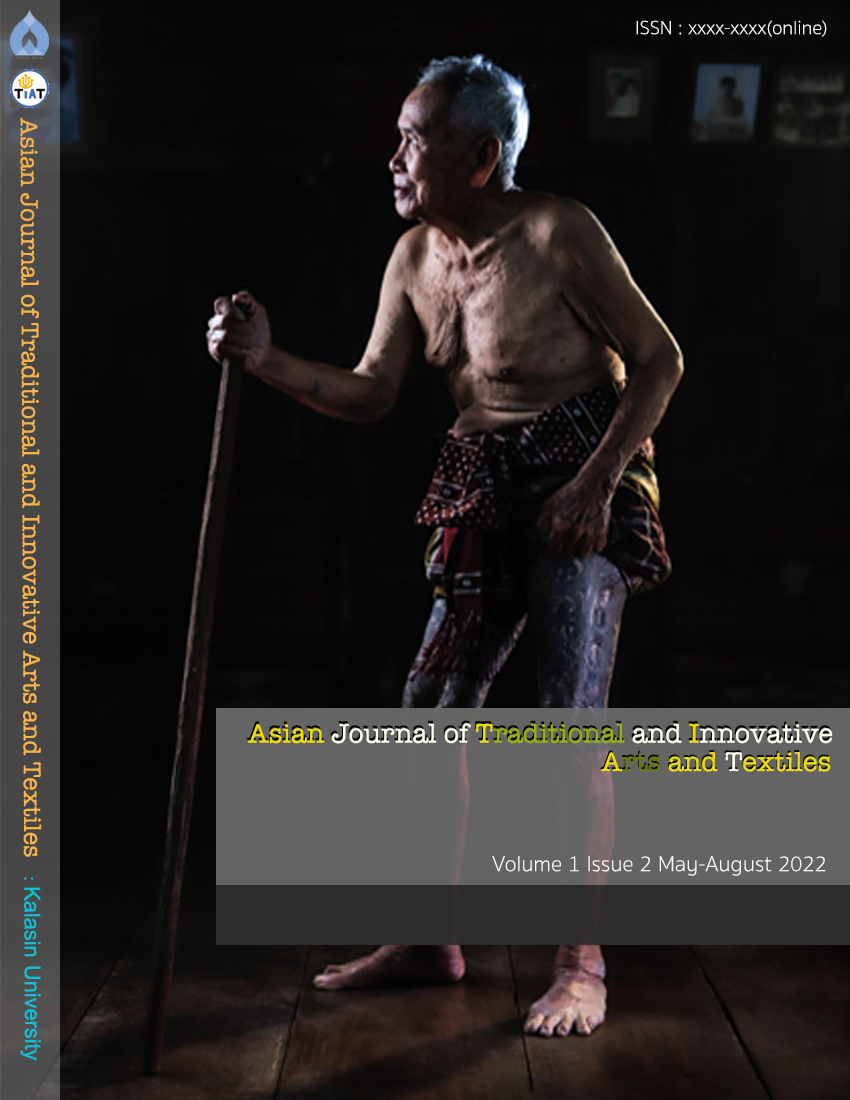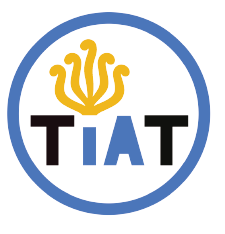Branding through participatory processes for agricultural product groups Ban Non Thiang village, Namon district, Kalasin province.
Keywords:
Brand , Participation process , KalasinAbstract
The action research-based article ‘Branding Through Participatory Processes for Agricultural Product Groups Ban Non Thiang Village, Namon District, Kalasin Province’ was conducted in Ban Non Thiang Village, Cluster 15 in Namom Subdistrict, Kalasin Province. It was designed on the objectives to understand the branding of agricultural products and to see the result of brand use by the agriculturists who work on crop farming, animal husbandry and agricultural product processing. In the action research which focusing on participatory process employed data and information collection tools; Semi-structured interview guideline, group discussion issues guideline, branding assessments, brand assessments, had the target audience for the research included 3 brand design experts, 12 members of the Community Enterprise Group, 20 consumers, 1 representative from the relevant authorities and 11 village committee members. The sampling used a specific selection method. Data analysis is classifying and grouping data and information in consistent with the conceptual framework and analysis of percentage, mean, and standard deviation statistics.
The action research findings showed stakeholders recognized the brand of village by its’ name ‘Non Thiang Tum Home’ as the location of the products with these following symbols; ‘Kwang-tung’ or Cantonese veggie leaves and ear of paddy in brown, green and golden yellow tones. The results of the Branding found the Brandresponses included Brand Quality Perception, Brand Credibility, Consumers Demands Perception andSuperiority in assessment scores are high. Branding relationship of which in these categories; Brand Loyalty, Brand Attitude Association and Participatory Level and the Overall Picture Response have assessment scores in high.
References
กลุ่มกีฏและสัตววิทยา. (2553). คำแนะนำการป้องกันกำจัดแมลงและสัตว์ศัตรูพืช ปี 2553. สำนักวิจัยพัฒนาการอารักขาพืช กรมวิชาการเกษตร.
ชฎาพร บางกรวย. (2551). การสร้างความเชื่อมั่นต่อสินค้าไทยผ่าน Thailand”s Brand สู่ตลาดต่างประเทศ. กรมส่งเสริมการส่งออก กระทรวงพาณิชย์.
ฐิติมนต์ ธนกิติเอื้ออังกูร. (2559). กลยุทธ์การสร้างตราสินค้าสำหรับอุตสาหกรรมแปรรูปผักและผลไม้ไทย.วารสารวิชาการ RMUTT Global Business and Economics Review. 11 (1): 130-195.
นงนุช โกสียรัตน์. (2553). การศึกษาความต้องการบริโภคผักปลอดสารพิษของผู้บริโภค ในร้านค้าเพื่อสุขภาพ แขวงศิริราช. บัณฑิตวิทยาลัย มหาวิทยาลัยศิลปากร.
พรรณพิลาศ กุลดิลก และบุหงา ชัยสุวรรณ. (2561). แนวทางการสร้างตราสินค้าสำหรับข้าวไทยที่มีกระบวนการผลิตจากไร่นาขนาดเล็ก. วารสารประชาสัมพันธ์และการโฆษณา. 12(1): 70-84.
เมตต์ เมตต์การุณ์จิต. (2553). การบริหารจัดการศึกษาแบบมีส่วนร่วม: ประชาชน องค์กรปกครองส่วนท้องถิ่น และราชการ. พิมพ์ครั้งที่ 2. กรุงเทพฯ : บุ๊คพอยท์.
สุรชัย ศรีนรจันทร์ และบุหงา ชัยสุวรรณ. (2562). กระบวนการสร้างตราสินค้าและการสื่อสารการตลาด ออนไลน์สินค้าเกษตรอินทรีย์. วารสารวิชาการเกษตร. 37(2): 177-185.
สำนักงานจังหวัดกาฬสินธุ์. (2563). แผนพัฒนาจังหวัดกาฬสินธุ์ พ.ศ. 2561-2564 ฉบับทบทวน 2563. สืบค้นเมื่อ 14 ตุลาคม 2563 ,สืบค้นจากhttp://www.kalasin.go.th
อรรถการ สัตยพาณิชย์. (2558). การสร้างตราสินค้าผ่านกิจกรรมความรับผิดชอบต่อสังคมขององค์กร. วารสารนักบริหาร. 35(1): 87-94.
Aaker, A.D. (2002). Building Strong Brands. London : Simon & Schust.
Downloads
Published
How to Cite
Issue
Section
License
Copyright (c) 2022 Asian Journal of Traditional and Innovative Arts and Textiles

This work is licensed under a Creative Commons Attribution-NonCommercial-NoDerivatives 4.0 International License.





